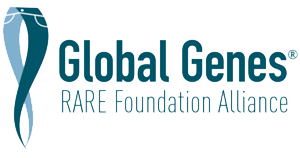General Info for LHON Plus: Lebers Hereditary Optic Neuropathy Plus
Overview
Lebers Hereditary Optic Neuropathy Plus disease, also known as LHON Plus, is a rare mitochondrial condition that causes vision loss and non-vision-related symptoms. Mitochondria are parts of a cell that help turn the energy we get from food into energy that the body can use. They are also important in the communication between body parts and creating other materials the body needs. Mitochondrial conditions can cause a variety of signs and symptoms in many parts of the body, particularly those that use a lot of energy like muscles and the brain.
Alternative Names
LHON Plus
Genetics
Affected Genes
MT-ND4, MT-ND6, MT-ND1
Inheritance Type(s)
- Mitochondrial
Cause and Genetics
LHON Plus is an inherited genetic condition, meaning it is passed down in a family. LHON Plus is caused by changes in the mitochondrial genome (mtDNA) or set of DNA contained in the mitochondria of a cell.
Mitochondria are inherited from the mother through her eggs. People typically do not inherit any mitochondria from sperm, making it very unlikely for mitochondrial conditions to be passed down from a father. There is a known family history of vision loss in about 60% of families with LHON plus, so many people with LHON Plus will be the first or only person diagnosed in their family.
Frequency
Frequency - More Information
The frequency of LHON Plus in most populations is unknown. LHON Plus is thought to be more common in northern European countries.
Affected Biological Gender
Both Male and Female
Affected Biological Gender - More Information
Both males and females can have LHON Plus; however, males are more likely to show signs and symptoms of LHON Plus than females. About 50% of males and 90% of females with genetic changes that are known to cause LHON Plus never show signs or symptoms of the condition.
Signs and Symptoms of LHON Plus: Lebers Hereditary Optic Neuropathy Plus
LHON Plus causes a range of signs and symptoms. The exact features, onset, and severity can vary widely among people with this condition, even among members of the same family. Always check with your provider if new symptoms appear or you are concerned.
The hallmark feature of LHON plus is vision loss, mainly central vision. This type of vision is important for things like reading, driving, and recognizing faces. Usually people with LHON Plus keep some peripheral vision.
Vision loss typically starts in the teens and twenties (though some people present earlier or later). Vision loss can start in one eye first or in both at the same time. After the start of vision loss people with LHON Plus are usually legally blind within a few months.
Non-vision signs and symptoms of LHON plus may include:
- Movement disorders
- Tremors
- Muscle weakness (myopathy)
- Problems with the electric signals in the heart (cardiac conduction defects)
- A “multiple sclerosis-like” presentation including muscle weakness, numbness, or difficulty with movement
- Mental health changes
- A rare type of spasms in babies (infantile encephalopathy)
- Bone changes
- Injury to the spinal cord (myelopathy)
Doctors and researchers are still learning about the different clinical signs and symptoms that may be related to LHON Plus. Papers describing people with LHON Plus have reported many signs and symptoms in addition to those listed above, but it is unclear which were directly caused by LHON Plus. We encourage you to continue talking to your doctor about possible signs and symptoms related to LHON Plus over time as researchers continue to learn more.
Diagnosis
LHON Plus can be diagnosed by:
- A careful, thorough eye examination
- Brain imaging
- Tests to rule out other causes like infection or blood vessel conditions
- Performing a genetic test
- LHON Plus is not included on newborn screening panels.
If there is a known family history of LHON Plus, prenatal testing can be performed on amniotic fluid (the fluid surrounding a baby) or chorionic villi (a specific part of the placenta). Results interpretation of this testing for mitochondrial conditions is complicated and genetic counseling is recommended.
Newborn Screening: Recommended Uniform Screening Panel (RUSP)
No
Newborn Screening - More Information
Treatment of LHON Plus: Lebers Hereditary Optic Neuropathy Plus
Treatment and Management
As of 2023, there is no FDA-approved therapy for LHON Plus. However, gene therapy for LHON is currently in Phase 3 clinical trials. Management of vision loss is usually supportive including the provision of visual aids, help with occupational rehabilitation, and registration with the relevant social services.
Treatment and management of LHON Plus non-vision features is symptomatic and supportive. This may include:
- Standard treatment of heart complications
- Standard treatment of muscle complications including physical therapy
- Standard treatment of movement difficulties, tremors, and numbness as available
Type of Specialists and Clinicians
- Cardiology
- Neurology
- Ophthalmology
Resources
- Leber’s Hereditary Optic Neuropathy (LHON) (BLIND) – Global Group
- eyeGENE – National Ophthalmic Disease Genotyping Network Registry
- International Foundation for Optic Nerve Disease (IFOND)
Connecting with others impacted by a rare disease allows for vital information to be shared about day-to-day life, prevents isolation, and gives hope. Please contact MitoAction for peer support opportunities at 888-MITO-411 or email mito411@mitoaction.org.
Other resources we recommend are:
Download the LHON Plus: Lebers Hereditary Optic Neuropathy Plus Fact Sheet (PDF)
MitoAction does not provide medical advice, diagnosis, treatment, or legal advice. It is essential that all those living with or caring for someone with a Mitochondrial or FAOD disease have an emergency protocol letter. These letters, which are written and signed by a doctor, share details about prescribed treatment during crises and in emergency room settings. Always check with your doctor if you or your child has concerns as everyone may present with symptoms differently. Before beginning any treatment or therapy, please consult with your physician.
Last Updated: 02/12/2025









